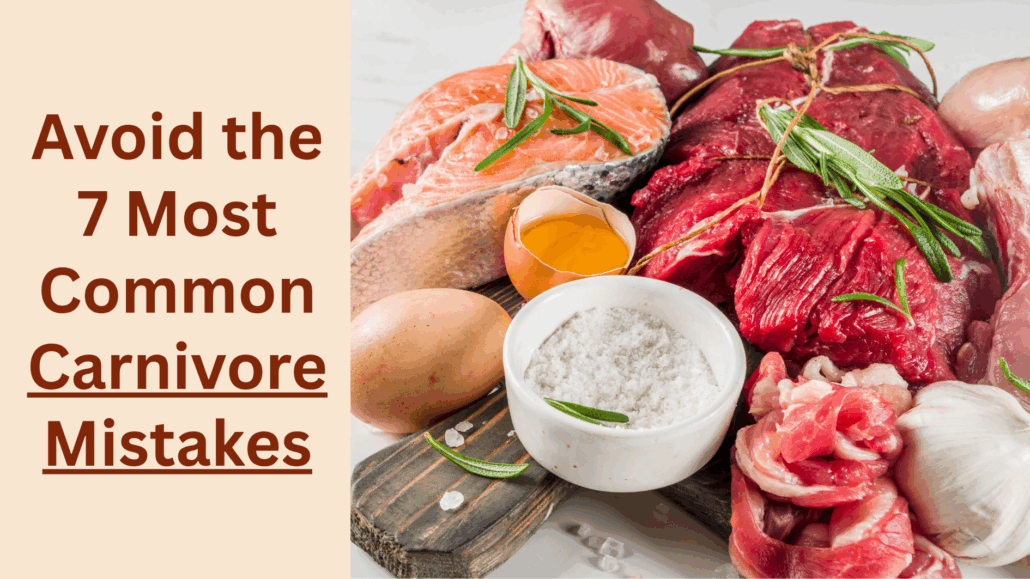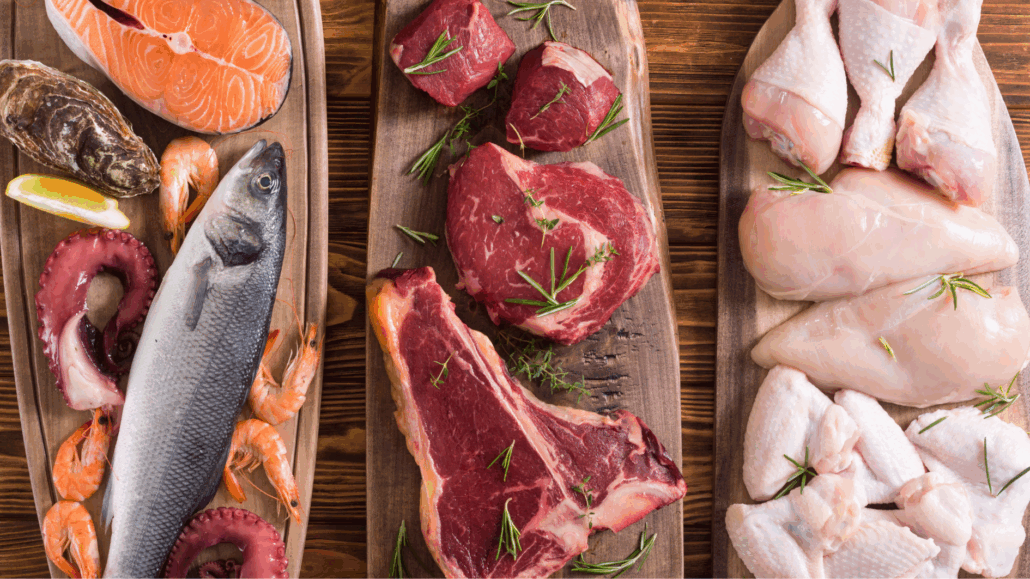We include products in articles we think are useful for our readers. If you buy products or services through links on our website, we may earn a small commission.
Starting a Carnivore Lifestyle? Here’s How to Avoid the 7 Most Common Mistakes

Table of Contents
The carnivore lifestyle is simple in theory but powerful in practice. By focusing on animal-based foods and eliminating plant toxins and processed ingredients, many people experience improved digestion, mental clarity, hormonal balance, and even fertility.
Still, like any significant lifestyle shift, starting a carnivore approach requires thoughtful planning. A successful transition is less about perfection and more about understanding what to prioritize and what to avoid.
Here’s how to start a carnivore diet safely, while steering clear of the most common beginner mistakes.
1. Jumping In Without Enough Fat
One of the biggest mistakes newcomers make is not eating enough fat. After years of hearing that fat is something to limit, many people default to lean meats like chicken breast or sirloin when starting carnivore. This leads to fatigue, hunger, and low energy.
Fat is the body’s primary fuel source on a carnivore lifestyle. It supports hormone production, brain function, and satiety. Without enough fat, the body struggles to enter and maintain nutritional ketosis.
Tip: Prioritize fatty cuts like ribeye, short ribs, ground beef with higher fat content, lamb, and egg yolks. Add suet, tallow, or butter if needed.
2. Cutting Out Salt and Electrolytes Too Soon
As carbohydrate intake drops, insulin levels fall, which causes the kidneys to excrete more sodium and water. This natural diuresis can lead to temporary symptoms like headaches, dizziness, cramping, and fatigue—often referred to as the “keto flu.”
These symptoms are not from the carnivore diet itself but from an electrolyte imbalance that’s easy to fix.
Tip: Liberally salt your food and consider supplementing with magnesium and potassium if needed. Bone broth is also an excellent source of minerals during the transition.
3. Expecting the Body to Adapt Overnight
The switch from sugar-burning to fat-burning doesn’t happen instantly. It can take several days to weeks for the body to fully adjust to burning fat for fuel and using ketones efficiently. During this period, some people experience temporary symptoms like fatigue, cravings, or irritability.
This is a normal part of metabolic adaptation.
Tip: Be patient, stay hydrated, and eat enough during this phase. Many people under-eat early on, thinking they need to restrict calories. Focus on nourishing the body first.
4. Being Afraid of Organ Meats
Organ meats like liver, kidney, and heart are nutritional powerhouses. They are rich in iron, B vitamins, retinol (true vitamin A), zinc, and more. Yet many people either skip them entirely or treat them as optional.
While it’s possible to thrive without organs for a time, including them can significantly accelerate nutrient repletion and support fertility, energy, and hormone health.
Tip: Start small with grass-fed liver, heart, or desiccated organ supplements. Even one to two servings per week can make a noticeable difference.
5. Overcomplicating the Process
With so much content online, it’s easy to get overwhelmed by rules, meal plans, and conflicting advice. The truth is, the carnivore lifestyle is meant to simplify eating—not make it more stressful.
You do not need a perfectly calculated macro ratio or a long list of specialty products.
Tip: Start with real, whole animal foods. Eat when hungry, stop when full, and listen to how your body responds. Simplicity is the key to consistency.
6. Ignoring Mental and Emotional Shifts
Nutrition is deeply tied to emotional patterns and long-held beliefs. Giving up comfort foods or dealing with social situations can create mental resistance. It’s common to feel unexpected emotions as the body and brain adjust.
The key is to stay grounded in your “why.”
Tip: Journal your progress, join a supportive community, and remember that healing often requires discomfort before clarity. Focus on the long-term vision of health, not just the short-term cravings.
7. Forgetting Bioindividuality
There is no single version of carnivore that works for everyone. Some thrive on strict ruminant-only eating. Others may do well including eggs, dairy, or occasional seafood. The goal is not dogma—it’s healing.
Pay attention to how your body feels, how your energy stabilizes, and how your digestion responds.
Tip: Adjust as needed, and don’t be afraid to personalize your approach. This is a lifestyle, not a rigid plan.
Final Thoughts: Build a Foundation, Not a Fad
Starting a carnivore diet can be a transformative step toward reclaiming your health, clarity, and vitality. But like any lasting change, it works best when rooted in knowledge, patience, and nutrient density.
Avoid the most common mistakes by focusing on what matters most: whole animal foods, proper fat intake, electrolyte support, and listening to your body. With that foundation in place, the carnivore lifestyle becomes not only sustainable but deeply nourishing—physically and mentally.
If you’re interested in taking control of your health and embarking on your carnivore journey with confidence, check out the 30 Days To Carnivore course, which includes lifetime access to carnivore meal plans, realistic shopping lists, recipes, daily video courses, and expert advice. You don’t have to do this alone!















